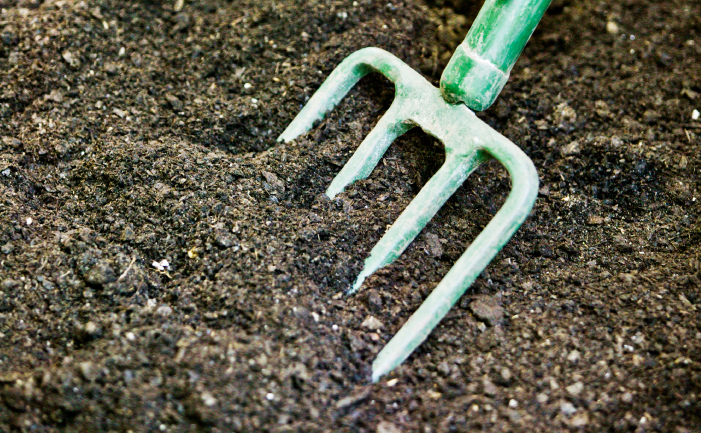
The worst problem facing gardeners in Australia today is that when soils dry out, they can become water repellent, or hydrophobic. When this happens, water just runs off instead of soaking into the soil. Don showed an example of a water repellent soil and explained how to beat this problem.
What causes hydrophobia?
Hydrophobia usually occurs in sandy soils and often it is caused by mulches. When uncomposted mulch sits on the surface of the ground, waxy, oily material leaves that mulch as it breaks down and coats each individual grain in the soil. When the soil dries out and you try to rewet it, the waxy, oily coating on the grains won’t let the water back in and the soil stays dry.
If you took that same mulch and put it into a compost heap, micro-organisms such as bacteria and fungi would break down the waxy and oily material along with the organic matter. As well, the remnants of organic matter that you get at the end of composting actually aid the soil to form tiny little cracks that allow water to penetrate – drying out is never really an issue and the soil always rewets. So organic material used as a mulch causes the problem, but solves the problem when used as a compost.
Fixing a water repellent soil
1. Don dug some highly composted material into the hydrophobic soil. This will cause an explosion in the population of microbes in the soil. Microbes produce sticky secretions and humus, bridging the gaps between mineral particles or groups of mineral particles and binding them into crumbs, or aggregates.
2. After planting out the area with drought-hardy plants such as kangaroo paws, Don applied a mulch of less mature compost, to continue the food supply to the micro-organisms.
3. Finally, Wettasoil was applied using a hose end applicator. (Note: wetting agents only work on sandy soils. They are unlikely to improve heavier soils.) Don recommended applying a wetting agent to problem areas two to four times a year, during dry periods.
Approximate costs
30 litre bag of Amgrow Organic Nutriblend 5,
$10 50 litre bag of Amgrow Water Saving Mulch
$10 2 litre Wettasoil Hose-On Watering Agent, $11-$15


